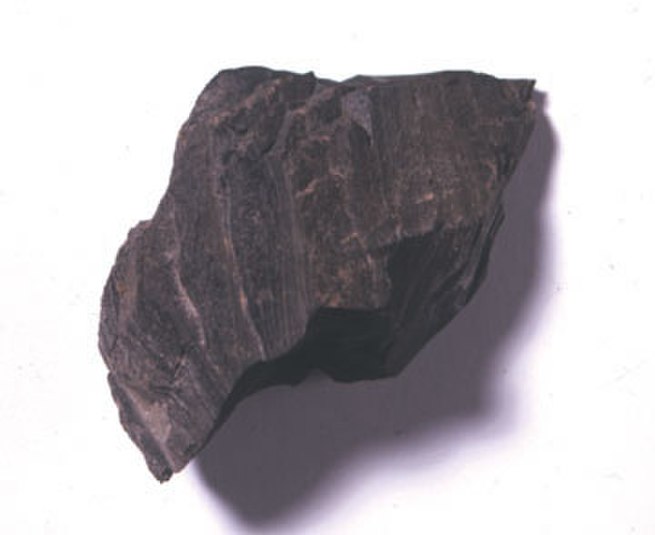
Main Difference
The main difference between Shale and Clay is that the Shale is a fine-grained, clastic sedimentary rock and Clay is a soft rock based compound often used for sculpture and tools.
-
Shale
Shale is a fine-grained, clastic sedimentary rock composed of mud that is a mix of flakes of clay minerals and tiny fragments (silt-sized particles) of other minerals, especially quartz and calcite. Shale is characterized by breaks along thin laminae or parallel layering or bedding less than one centimeter in thickness, called fissility. It is the most common sedimentary rock.
-
Clay
Clay is a finely-grained natural rock or soil material that combines one or more clay minerals with possible traces of quartz (SiO2), metal oxides (Al2O3 , MgO etc.) and organic matter. Geologic clay deposits are mostly composed of phyllosilicate minerals containing variable amounts of water trapped in the mineral structure. Clays are plastic due to particle size and geometry as well as water content, and become hard, brittle and non–plastic upon drying or firing. Depending on the soil’s content in which it is found, clay can appear in various colours from white to dull grey or brown to deep orange-red.
Although many naturally occurring deposits include both silts and clay, clays are distinguished from other fine-grained soils by differences in size and mineralogy. Silts, which are fine-grained soils that do not include clay minerals, tend to have larger particle sizes than clays. There is, however, some overlap in particle size and other physical properties. The distinction between silt and clay varies by discipline. Geologists and soil scientists usually consider the separation to occur at a particle size of 2 µm (clays being finer than silts), sedimentologists often use 4–5 μm, and colloid chemists use 1 μm. Geotechnical engineers distinguish between silts and clays based on the plasticity properties of the soil, as measured by the soils’ Atterberg limits. ISO 14688 grades clay particles as being smaller than 2 μm and silt particles as being larger.
Mixtures of sand, silt and less than 40% clay are called loam. Loam makes good soil and is used as a building material.
-
Shale (noun)
A shell or husk; a cod or pod.
-
Shale (noun)
A fine-grained sedimentary rock of a thin, laminated, and often friable, structure.
-
Shale (verb)
To take off the shell or coat of.
-
Clay (noun)
A mineral substance made up of small crystals of silica and alumina, that is ductile when moist; the material of pre-fired ceramics.
-
Clay (noun)
An earth material with ductile qualities.
-
Clay (noun)
A tennis court surface.
“The French Open is played on clay.”
-
Clay (noun)
The material of the human body.
-
Clay (noun)
A particle less than 3.9 microns in diameter, following the Wentworth scale.
-
Clay (noun)
A clay pipe for smoking tobacco.
-
Clay (noun)
A clay pigeon.
“We went shooting clays at the weekend.”
-
Clay (noun)
Land or territory of a country or other political region.
“Danzig is rightfully German clay.”
-
Clay (verb)
To add clay to, to spread clay onto.
-
Clay (verb)
To purify using clay.
-
Shale (noun)
soft finely stratified sedimentary rock that formed from consolidated mud or clay and can be split easily into fragile plates.
-
Clay (noun)
a stiff, sticky fine-grained earth that can be moulded when wet, and is dried and baked to make bricks, pottery, and ceramics
“a clay soil”
“a clay tile”
“the soil is mainly clay”
“the rocks are covered by various mixtures of loose clays and sands”
-
Clay (noun)
sediment with particles smaller than silt, typically less than 0.002 mm.
-
Clay (noun)
a hardened clay surface for a tennis court
“she won more matches on clay than any other player”
-
Clay (noun)
the substance of the human body
“this lifeless clay”
-
Clay (noun)
a European moth with yellowish-brown wings.
